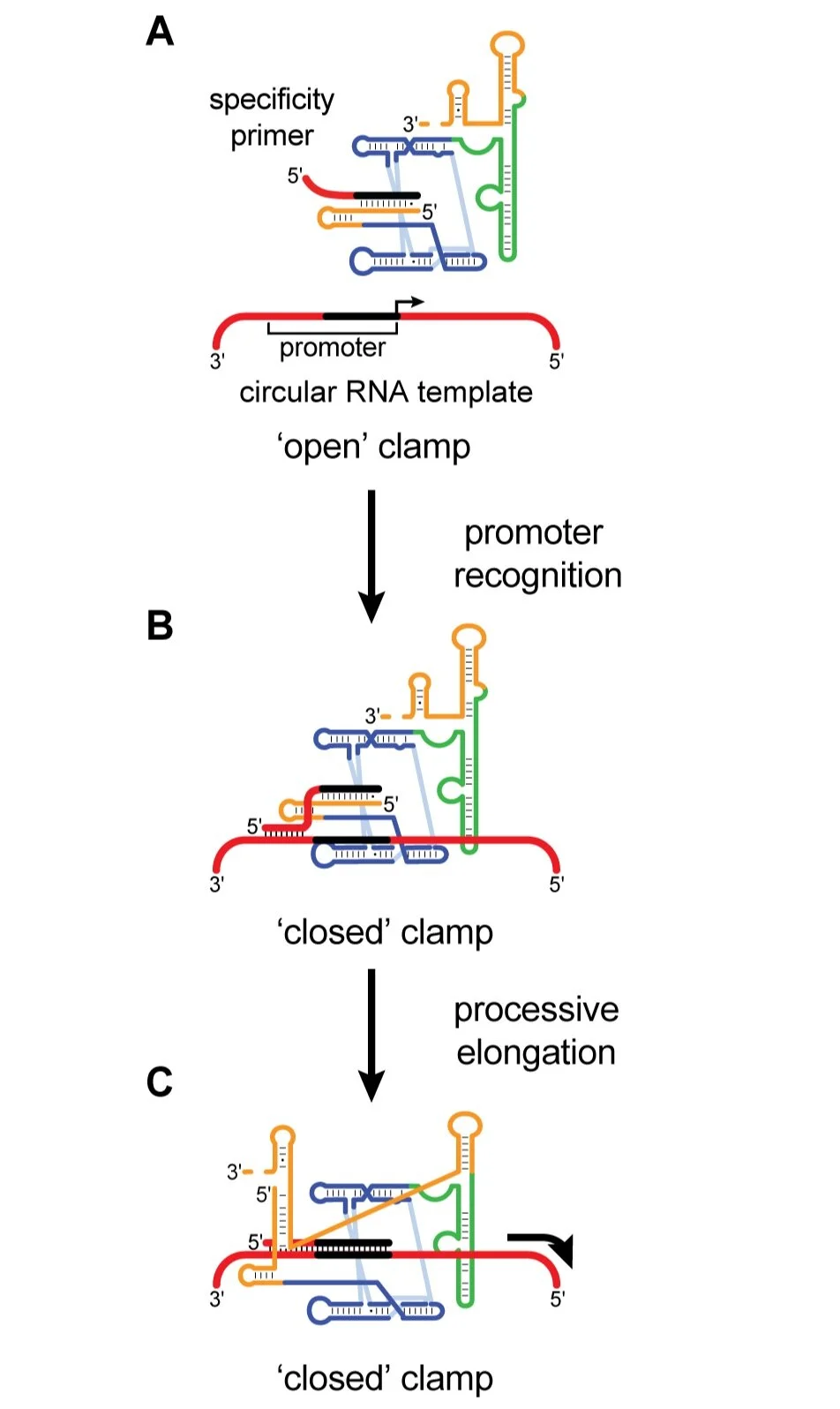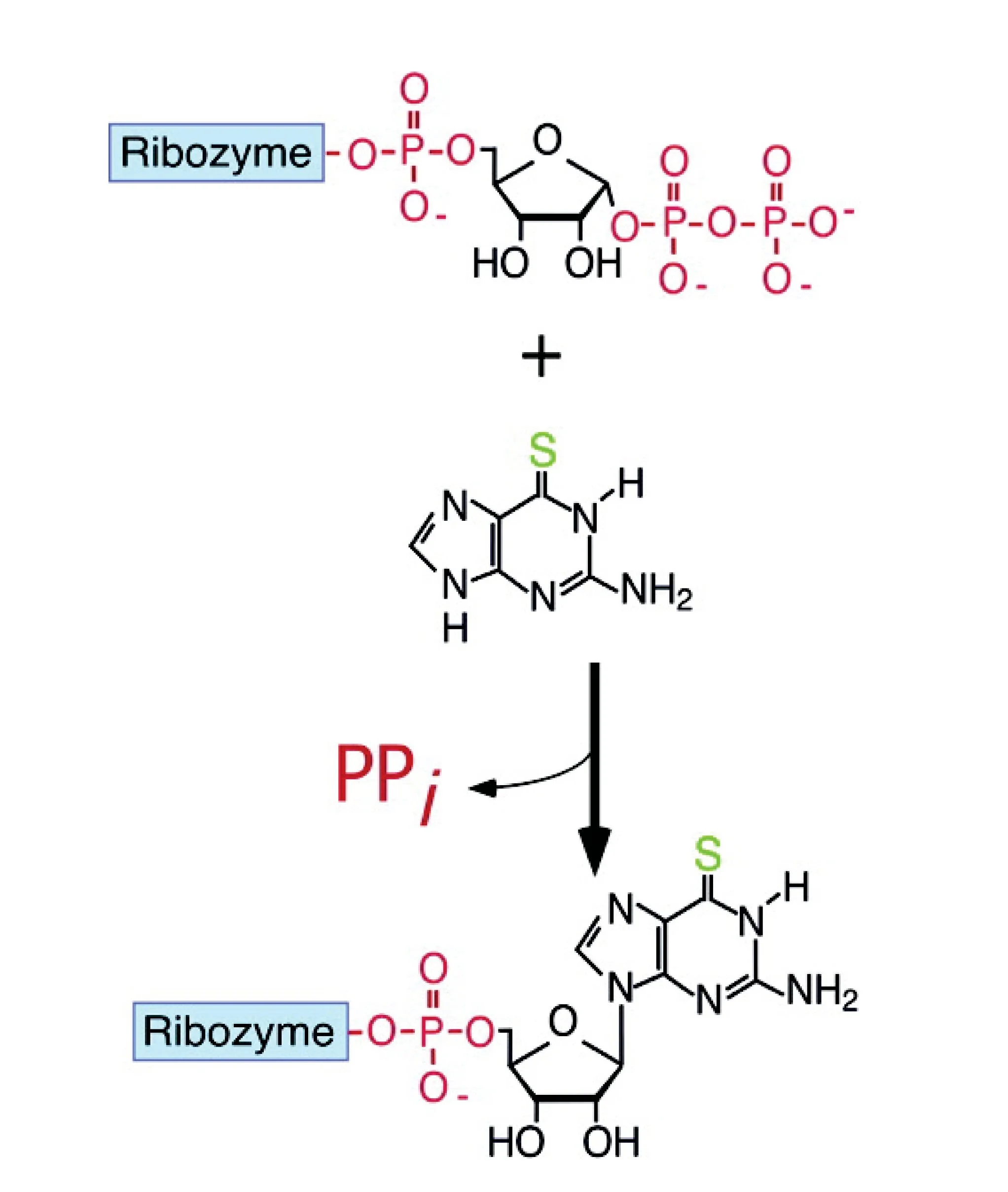RNA WORLD
The ability of RNA to recognize small substrates and promote difficult chemistry is critical to providing a solid foundation for the RNA World hypothesis, which postulates that RNA served both as the carrier of genetic information and as a catalyst in primordial life. We focus on this problem using in vitro selection (SELEX), where ribozymes are isolated from large pools of random sequences by iterative rounds of selection and amplification.
The Clamping Polymerase Ribozyme: Processive RNA Polymerization and Promoter Recognition in an RNA World
Arguably, the greatest limitation to exploring the RNA World hypothesis is the lack of a true RNA replicase: a processive, trans-acting RNA dependent RNA polymerase ribozyme capable of mediating general replication of RNA. Derived from the Class I ligase ribozyme, we have recently selected a processive polymerase ribozyme with an RNA clamp domain that mimics many of the mechanisms of modern protein DNA-dependent polymerases (Cojocaru, 2021).
The selected Clamping Polymerase (CP) ribozyme has the following features:
A. The polymerase clamp domain forms an “open” complex when activated with a sigma-like RNA.
B. This “open” complex then searches for a specific RNA promoter. When found, the sigma-like RNA is displaced from the clamp onto the template, triggering a structural rearrangement to a “closed” complex entrained on the RNA template.
C. The displaced sigma-like RNA now serves as a primer, allowing the clamped polymerase to extend a broad range of templates in a processive fashion.
As an additional feature, this polymerase can synthesize part of its own sigma-like RNA when in the “open” form. This allows part of the polymerase sequence to be encoded into the RNA promoter motif, providing a mechanism for a molecular sense of ‘self’ to evolve. The CP ribozyme demonstrates how the important concepts of promoter recognition, processive polymerization, and self-recognition could have rapidly evolved in a primordial “RNA World”.
Small Molecule chemistry catalyzed by ribozymes
Dr. Unrau’s initial work involved selecting and evolving ribozymes able to form a nucleotide from a free pyrimidine base and a tethered form of activated ribose (Unrau and Bartel 1998; Lau et al. 2004). These glycosidic bond-forming ribozymes have important ramifications on how the synthesis of nucleotides might have evolved in an RNA World. Further, the nucleotide monomer products of such ribozymes would serve as basic substrates for what’s regarded as the “Holy Grail” of the RNA World hypothesis, an RNA-templated RNA polymerase responsible for the replication of a RNA genomes. Over the years, we have expanded on this work by focusing on RNA polymerization (Zaher and Unrau 2007; Wang et al. 2011).


